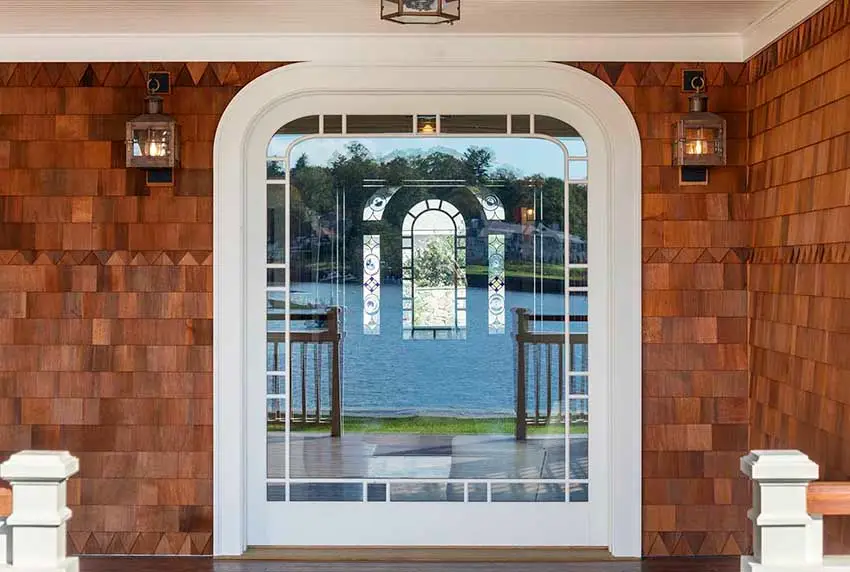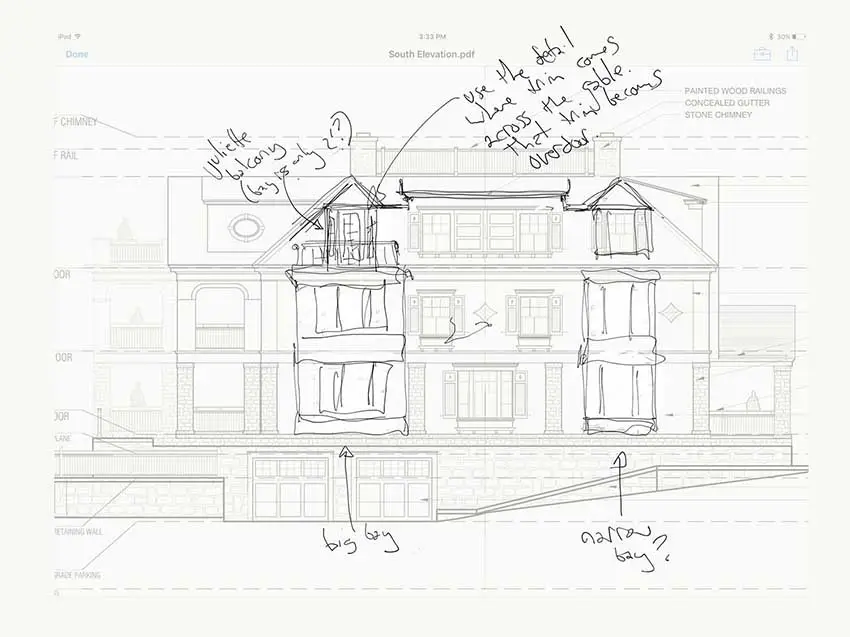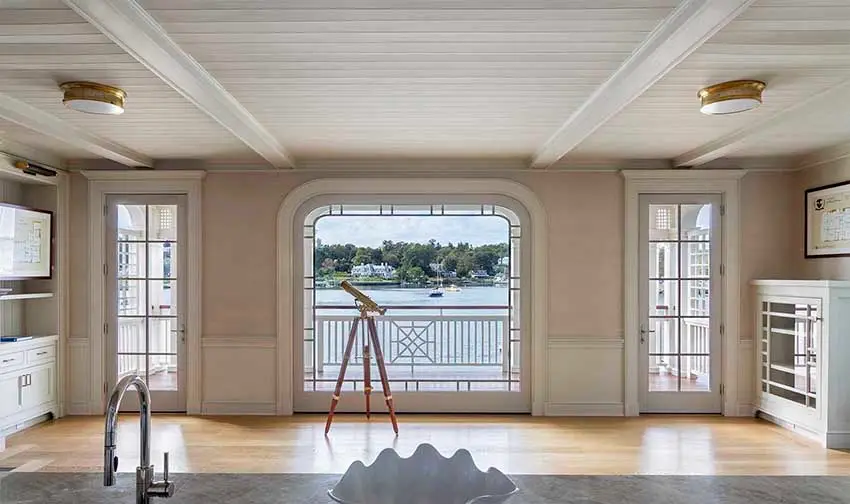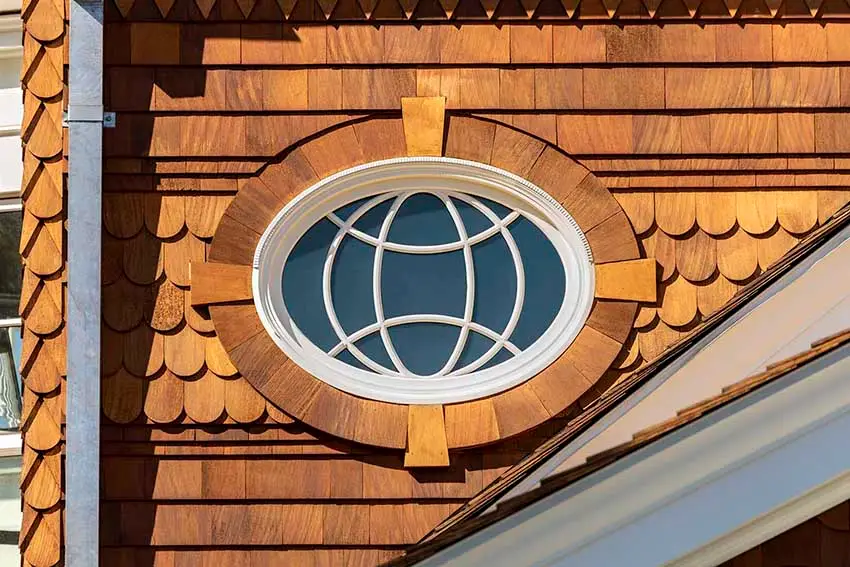The Corsair by Robert A.M. Stern Architects
Greenwich, CT | Multi-Family Residential | Steve Antonucci w/ National Resources
- Interview Featuring:
- Daniel Diaz

The waterfront homes of the Corsair offer every resident stunning views of Greenwich Harbor.
Designed by Robert A.M. Stern Architects [RAMSA], the Corsair is a 14,000-square-foot apartment house in Greenwich, Connecticut. Located in a waterfront community surrounded by mostly single-family homes, the building thoughtfully balances the design and scale of multi-family housing with the look and feel of more traditional Shingle-style homes. A double-gable gives the three-story Corsair the appearance of a smaller, building. Its fieldstone cladding, cedar shakes, and richly detailed facade —including operable shutters, embellished downspouts, and custom lead glazing— all help reduce the bundling’s perceived size. As do the expansive picture windows and generous private porches that give all 8 units a direct connection to the water.
To get some more insight into how the windows helped RAMSA achieve their goals for this project, Acelab spoke with RAMSA Associate Daniel Diaz.

Acelab: And what kind of windows are featured in the Corsair?
Daniel Diaz: We used Kolbe windows and doors, There are several types. There are double-hung windows on every facade, and then there are casements and custom picture windows, fixed oval windows, and fixed diamond windows as well. We also used custom pieces throughout the building.
Products from this Case Study on Acelab
Windows by: Kolbe Windows & Doors
Click on Images to see more
Browse All

Acelab: The standout windows are those curved windows facing the water. Were those custom?
Daniel: Yes, they are. We tend to do a lot of custom windows. Those were probably the hardest ones to pin down, because of the curvature. We had to do a couple of passes on the shop drawings just to make them perfect.



Acelab: Why was it so important to get those windows right?
Daniel: It's a type of window we’ve used before in the Brewer studio [Gary Brewer, partner at RAMSA]. It’s almost a signature detail for us. And used here, it reinforces the Corsair’s nautical motif — it’s named after JP Morgan's private yacht. It also fits the building type and the precedents we were looking at: old homes with grand porches, hotels on the water; boathouses, and residential projects by McKim Mead and White.
Acelab: Beyond aesthetics, what else did you have to think about when selecting the windows?
Daniel: Well, since it’s in New England, in Connecticut, we had to be careful with views on the harbor side. We wanted to give the residents great views, but we had to keep in mind the wind factor and the direct light and its potential to change the interior atmosphere of each unit. Exterior finishes were important.


Acelab: Are they wood windows?
Daniel: They are. I want to say they're painted pine on the exterior, and mahogany on the interior. We had to be sure the windows had a water-resistant exterior but an interior that would let us customize the casings and jambs to match other components and the overall design of the project.


Acelab: So what made you go with Kolbe for this project?
Daniel: I think it had to do with a lot of different components. Look, pricing, but also durability. Because it's the waterfront, we need hurricane windows. Different companies tend to have different details and ratings. So we did a thorough study of the windows before choosing them. With these, we spent a whole day with the client just looking at options for windows.


Acelab: In general, what’s your process like for selecting windows?
Daniel: When a client wants something specific, we do a lot of research and review our options. We make sure those windows will work for the type of project we’re doing. But we tend to typically stay away from standard-sized windows and standard details, especially in our Shingle Style projects like this one. That means that a lot of those windows can be a little difficult to install at times, depending on the season or the building design and detail. With all our projects we tend to give our clients the most custom design that they could possibly have.
Thanks to Daniel Diaz and the RAMSA team for their help with this interview. You can learn more about The Corsair on their website.
Interview conducted by ADvsCOPY for Acelab. It was been condensed and lightly edited.
